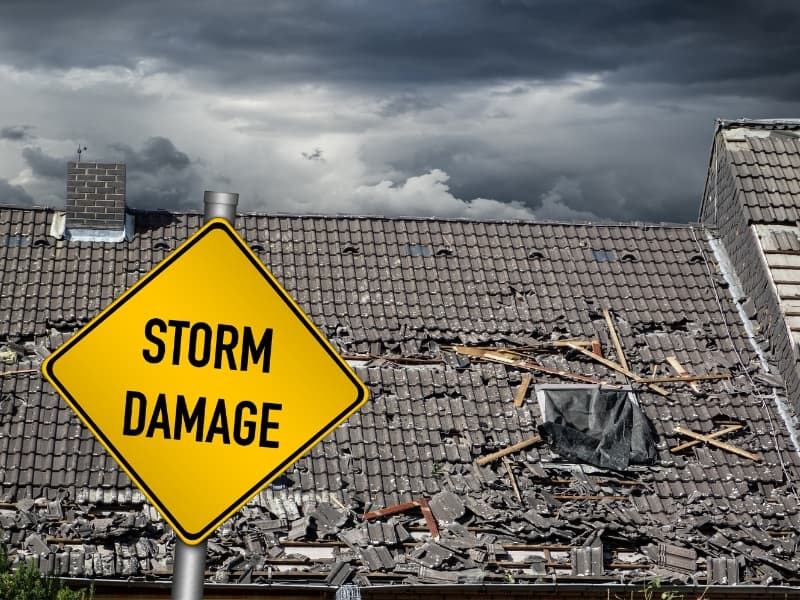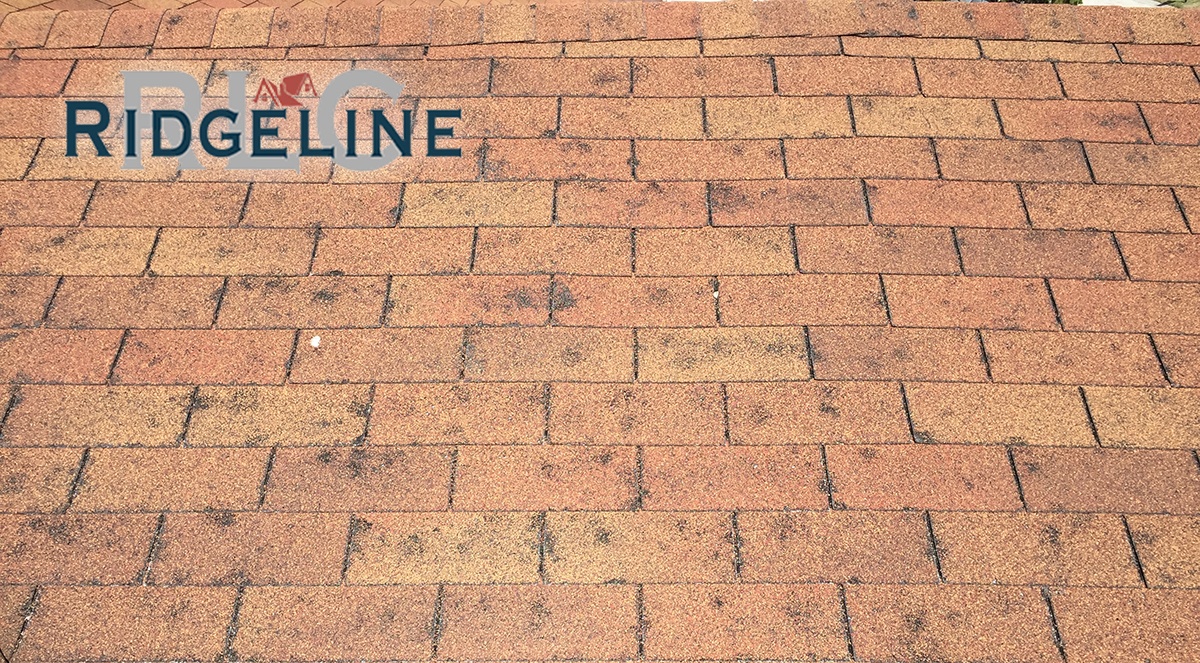Daily wind and rain can test your home’s exterior, but what about when the weather turns a bit more powerful? Thunderstorms, tornadoes, and hurricanes can pack a powerful punch to even the most well-constructed structures. Your roof is your home’s first line of defense from rain, hail, and wind, so what kind of damage can these events do?
Wind Damage
Winds from hurricanes and tornadoes can bring tremendous damage. Over time, everyday winds can break down the seal that holds shingles down. When an event like a hurricane or tornado happens, they can easily lift off old and weathered shingles, exposing your roof to accompanying water, hail, and gusting debris.
Water Damage
One of your roof’s main functions is to keep you dry from falling rain. However, this doesn’t mean they’re fully waterproof. Over time, the rain will weaken shingles and wear down other elements of a roof. A big rain event like a severe storm can dump a lot of water on your home in a short amount of time. If there is existing damage, moisture can seep in and cause structural damage to your home. If the problem is left for long enough, it can cause rot and mold, which can really affect your family’s health.
Hail Damage
Hail damage can be difficult to spot because the signs aren’t always obvious. On the surface, your roof could appear fine, but damage can be underneath the surface. After a hail storm, you’ll want to check your roof. An obvious sign of hail damage is a pattern of dents or cracks on the surface of shingles. If nothing is obvious on the roof, check your metal components like chimneys, gutters, and vent pipes. Hail damage to shingles can cause cracks at the point of impact which can lead to water damage. Damage can also occur to the fiberglass mats, which may or may not be noticeable.
Guide to Assessing and Repairing Storm Damage to Your Roof
Storms can cause significant damage to your roof, and it’s important to take the necessary steps to assess and repair the damage as soon as possible. Without prompt, professional attention, damaged roofs can lead to further structural issues that could cost a lot of money in the long run. Here’s a guide for assessing and repairing storm damage to your roof:
Step 1: Spotting Signs of Damage
The most obvious signs of roof damage are missing shingles, dents in metal surfaces, punctures in the felt coating, or other obvious physical signs. Additionally, you should look for cracked or loose sealant around vents, chimneys, flashing points, skylights, or other areas where two different materials meet. If you notice any of these signs of storm damage on your roof, then it’s time to move on to Step 2.
Step 2: Test For Leaks
Testing for leaks is a critical step in assessing damage after a storm passes through. To do this, head into your attic with a flashlight and look for wet spots that may indicate leaks. If you find any evidence of moisture intrusion inside the attic space or walls near the problem area outside, then it’s likely that something needs repair.
Step 3: Contact A Professional
Don’t attempt repairs yourself without training – contact a professional contractor who repairs storm-damaged roofs immediately! An experienced contractor can help determine what repairs need to be made and provide you with an estimate for the work. It’s essential not only for safety reasons but also because attempting DIY projects can void certain manufacturers’ warranties on materials like shingles or tiles as well as put you at risk for more extensive damages if done incorrectly.
Step 4: Clean Up After Repairs Are Made
Once repairs are made, all debris from the damaged material must be properly disposed of so that it doesn’t interfere with future inspections or inspections of neighboring properties. This includes disposing of extra material such as discarded shingles or scraps from wood decking replacement projects, safely and adequately without leaving them laying around in public view or cluttering up natural areas nearby where they could cause additional harm down the line. In some cases, if necessary, hire professionals to assist with debris removal as well during post-repair clean-up efforts!
Step 5: Follow-Up Inspections
Follow-up inspections are essential to ensuring any repaired roof stays in top condition over time. Schedule a follow-up inspection anywhere from six months after repair work is completed up until once per year depending on how much wear and tear has been seen around your town/city due to heavy weather-related events like hail storms etcetera since initial repairs were made – this way any potential subsequent issues can be caught quickly before they become big problems!

What to do when your roof has storm damage?
The first step when you notice storm damage to your roof is to ensure that everyone in the household is safe. Even if the roof has not collapsed, there may be places where tiles or shingles have been broken away, creating a hazard for anyone trying to walk across it. Once everyone is safely off the roof, it’s time to assess the extent of the damage.
Take photos of any visible damage from multiple angles so that you have a record for insurance purposes. It’s also essential to look for external signs of damage like broken tree branches or missing shingles in neighboring properties. Any additional evidence you can provide will help convince an insurer that your claim is valid and could reduce delays in getting your repairs approved and underway.
If possible, call a reputable roofer as soon as possible after noticing storm damage so they can begin assessing what needs to be done. The contractor should give you an honest assessment of what needs fixing on your roof, and an estimate for labor and materials costs, so there are no surprises down the line when it comes time to pay bills. Ensure all cost figures are included in writing before giving a final go-ahead on any work on your property so that nothing gets lost in translation between yourself and your contractor.
You should also contact your insurance company as soon as possible after noticing storm damage because waiting too long could jeopardize any coverage they may provide later down the line. It’s important to communicate clearly with both parties involved throughout this process since timeliness is essential to make sure repairs can get done quickly before other weather conditions cause more harm than good.
If you believe you have roof damage from a recent storm in the Huntsville, Pensacola, or Spanish Fort areas, give the professionals at Ridgeline Construction a call. If the damage is severe enough that we determine an insurance claim is necessary, we’ll provide all the necessary documentation for proof of damage. Start the process online today or give us a call at (256) 325-1345.








